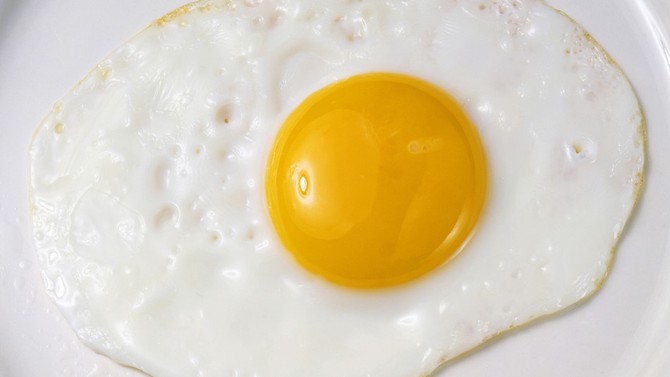5 Tiny Ways to Boost Your Metabolism
Over time, these simple changes can make a big difference in how you look and feel.
By Emma Haak

Photo: Smneedham/Getty Images
Add an Extra Egg at Breakfast
Eating more protein could bump up your post-meal calorie burn, suggests research in the Journal of the American College of Nutrition. In a small study, researchers had 10 healthy, normal-weight women between 19 and 22 years old eat a high-protein diet one day and a high-complex-carb diet another, to compare how each diet affected their metabolism. (The first diet contained 30 percent protein and 30 percent complex carbs. The second had 50 percent complex carbs and 15 percent protein. Roughly equal amounts of sugar and fat made up the rest.) They found that after meals on the high-protein day, the women's bodies were producing about twice as much heat, an indication that they were also burning more calories.

Photo: Cultura RM Exclusive/BRETT STEVENS/Getty Images
Make Your Meals 25 Percent Smaller
"If you're not hungry within three to four hours after you finish a meal, you're eating too much at a time," says Tamara Melton, RDN, a spokesperson for the Academy of Nutrition and Dietetics. This is a problem because ideally you'd be eating every few hours so that your body has a steady stream of calories to use for energy. In other words, you're not scarfing down extra that is then stored as fat. If you want to get on the metabolism-boosting schedule, you'll need to shrink your meals. First, take a look at your plate and make sure it's made up of half non-starchy fruits and vegetables, one quarter lean protein, and one quarter starch or whole grains, says Melton. (Don't overthink the difference between 25 percent protein here and 30 percent from the first tip–the main point is making sure protein is a significant portion of your diet.) Then cut the portions of each section by 25 percent and pay close attention to your hunger levels. If you're ready to eat again within the three to four hours, you're all set. If you're completely ravenous, try cutting by one eighth instead of one quarter.

Photo: Sally Anscombe/Getty Images
Turn Your Strength-Training Routine into a Circuit
Anyone already doing resistance work is one metabolism-boosting step ahead of those who don't. To take that muscle-building activity and turn up the calorie burn, stop doing it in chunks (all of your pushups, rest, all of your lunges, rest, and so on). Instead, turn it into a circuit workout, which will keep your heart rate elevated and help you burn more calories during and after the workout, says Rick Richey, National Academy of Sports Medicine master instructor and a certified personal trainer. It's easy to take your old workout and circuit-ize it. If you used to do 3 sets of pushups, rest, 3 sets of squats, rest, then 3 sets of mountain climbers, here's the circuit version: do 1 set each of pushups, squats and mountain climbers with no breaks in between, then take a short rest and repeat that sequence 2 more times.

Photo: Ezra Bailey/Getty Images
Ignore Your Mom's Orders to Sit Still
Fidgeting could help you burn an additional 350 calories per day, suggests a small study from the Mayo Clinic. Researchers tracked the daily movements of 10 mildly obese people and 10 lean people for 30 days and found that the lean group spent about two more hours per day fidgeting or on their feet than the overweight group, who tended to sit and stay stationary. That difference accounted for about 350 calories per day, gone. If you need more motivation to move around in your seat or pace around your workstation, think about this: Only women who considered themselves "very occasional fidgeters" had an increased risk of mortality associated with sitting for long periods of time, found a 2016 study in the American Journal of Preventive Medicine. Women who said they were "moderately or very" fidgety had no increase in risk compared with women who didn't spend as much time sitting.

Photo: Thomas Barwick/Getty Images
Do the Thing That Might Make You Look a Little Nuts
By now, you and everyone you've ever met have heard about high intensity interval training. But you may not be taking advantage of all of your opportunities to do it outside the gym. Case in point: Anytime you're walking, whether you're on your usual slow stroll with a friend, walking from the subway stop to the office (avoiding knocking over your fellow sidewalk commuters, of course) or going to the end of the driveway to get the mail –these are opportune times to bump it up. Bursts of speed, no matter how short, are a proven way to increase your calories burned, says Richey. "You can make it up as you go, using visual landmarks and saying 'I'm going to push myself until I get to that spot,'" says Richey. "Start with one speed increase and work up to more. The more you do, the greater the effect."
Published 09/07/2016

